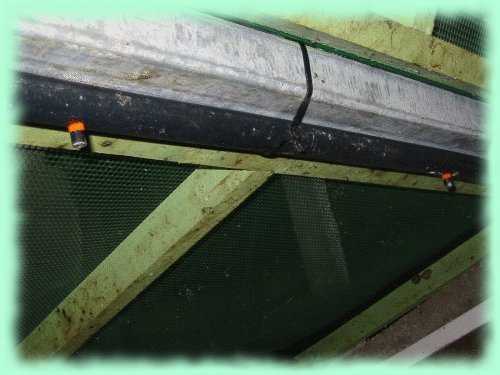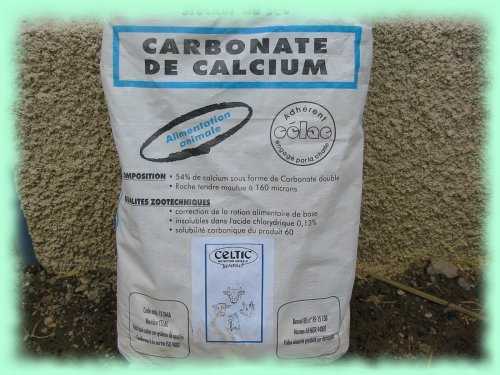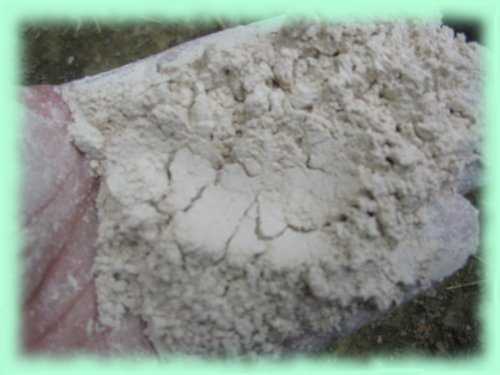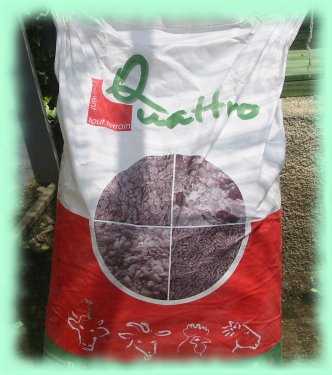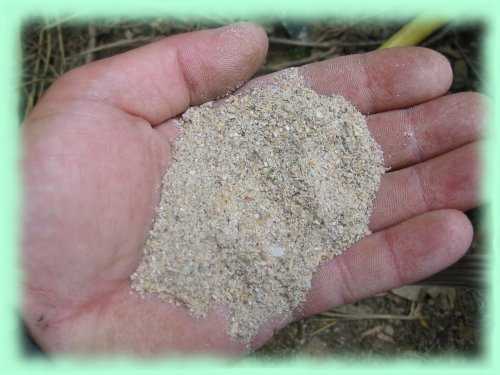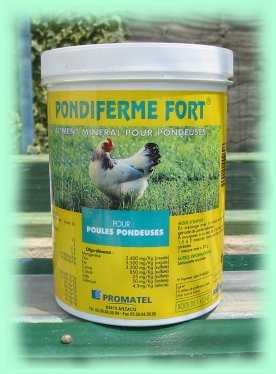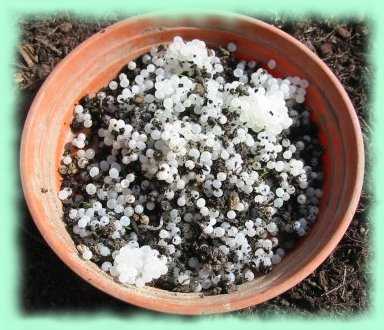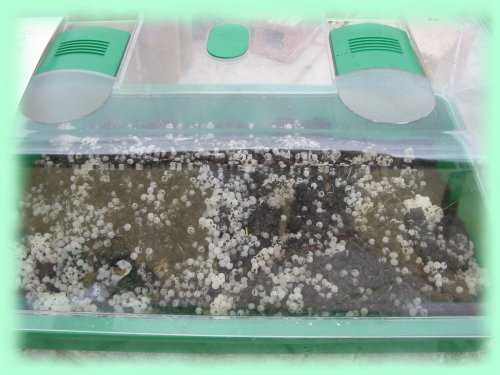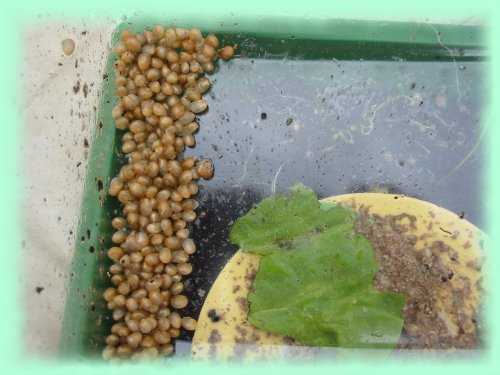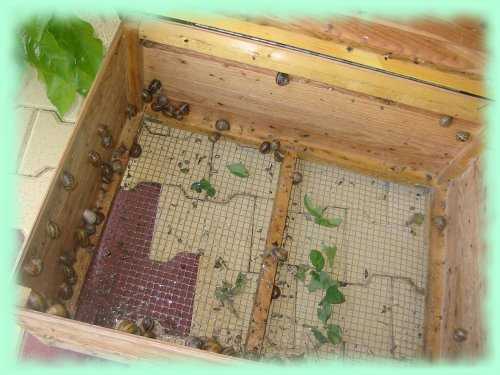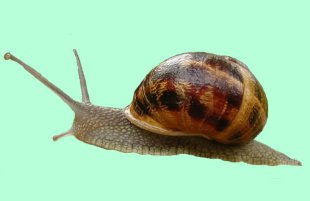| |||||||||||||||||||||||||||||||||||||||||||||||
Last
update: 04 Dec 2006
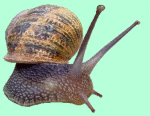 The snail rearing part of this site is currently under development. If you have remarks, ideas, documents concerning snails, thank you to contact me: contact@gireaud.net. In the same way, if you see errors..... In advance thank you. Before presenting the snail rearing, let us start knowing some little more about our small gastropods. I propose you 3 documents:
These lines which will follow are not a procedure but simply the fruit of my experiment. Each helicicultor has his small secrets. I expose you mine: 1 -
THE ENVIRONMENT: Snails are raised in "escargotières". They are small parks of a few m2 assembled with wooden boards or breeze blocks. The professionals generally use greenhouses. But the produced quantities are not the same ! 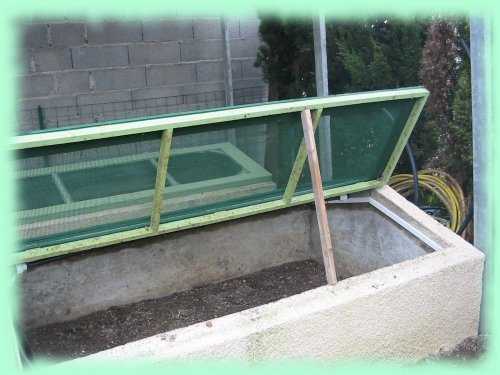 To protect snails from predatory (birds and lizards), I installed a plastic netting on the higher shutters. This netting is available in the stores of do-it-yourself and garden-centers. At the bottom of the escargotière (under the compost), an old wire netting will avoid the arrival of rats. Density: Foresee 150 to 200 snails/m2 for the aspersa maxima. If aspersa müller: 300/m2. Caution!! Do not envisage too large! Count approximately 70 viable youngs snails by adult.
They are only theoretical figures, but think there.... 2 - WATER: Water is distributed by nebulization and not by watering. This last is too stressing for the youngs. 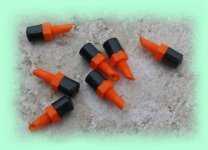 The nebulization is carried out by diffusers fixed on a pipe of irrigation. It is enough to bore the pipe with a wick, to screw the diffuser, it is finished!
Nebulization roles:
When the weather is hot (June 2005 for example), I sprinkled 4 times/day. That decreased the losses. He yes! the snail likes neither the heat, neither the cold (it dies below 0°), nor draughts. To limit heat, I installed one fencing reed in bamboo above the "escargotières". It is effective and not expensive! That's makes a litle hut !! 3 - NUTRITION: Food is distributed at will. On boards flour is deposited. Think of protecting food from rain and watering. A reversed gutter will make the deal perfectly. According to my diponibilities, I use 2 kinds of flours. In the 2 cases, it is necessary to foresee limestone for the shell formation. Receipt 1:
Piglets flour (P35):
The mineral complement:
I also give them pastes (risings), dry bread, zucchini, salad (that, they like!!), tomato, apple, pear, melon, banana, spinach, cutter, celery turnip, water melon, radish, cabbage, etc... The flour is in fact only a complement! Their food is according to the products coming from the garden. There also exists in the trade a complete feedingstuff for heliciculture. I did not test, but that exists! At the bottom of the "escargotière", I installed wooden pallets (untreated preferably) so that they can shelter. I also pose lean on the walls, small planks from 40 to 50 cm broad (of the boards to be stuck). I use the 2 systems. The main thing, it is that they can stick somewhere. Do not forget to sow grass before installing the pallets and snails. The grass has the advantage of not (or little) being consumed by the snails. So this vegetable cover will improve the waste elimination left by your snails. I also mix with the lawn, seeds of clover and colza. They adore! Think hygiene! Remove empty shells, excesses of droppings and the food not consumed. A good hygiene is PRIMARY IMPORTANCE! A nauseous odor and the arrival of flies is factors of alarm not to be neglected. 4 - THE FENCE: On the photograph (a little higher) of the "escargotière", you can see, in top of the wall, a white rod. It is above that the electric fence will be fixed. Concerning the barriers leak-preventer, I preferred to develop the subject in another page entirely dedicated to the systems of fences. At the hour I write these lines (March 4, 2006), my "escargotières" are in sanitary emptying. As soon as they are full, I would present the continuation to you. With soon..... And here!! We are on March 11, 2006 and the rearing started well! 5 - THE REARING: The reproducers are awake at the end of February - beginning of March. The snails are protected from possible cold by the demounting of P17 on the "escargotières". I gain 5°C, that is not negligible. The layings will begin 15 days after the waking. It is at this time that the surveillance is daily. This detailed attention concist "to mark" the layers with a plastic reference mark. After 2 days, when the snail finished its laying, I recover eggs to put them on a bed of compost in a mini-greenhouse. This last one will be placed in a room at 20°C approximately. It is necessary to keep an important water content until the blossoming.
3 weeks afterwards, it is the blossoming. All the reproduction of snails is explained in detail here.
The youngs are put in the "escargotières" at the age from 7 to approximately 15 days. If all is well, they will become adult in 5 to 6 months.
6 - THE FAST: The fast consists in making eliminate possible toxic grasses that the snail was able to ingest. So it is useless to make fast the snails coming from your rearing. It will be simply necessary to make them disgorge. To make fast our dear gastropods, lock them into a wooden or plastic box (banish metal). For the bottom, I fixed a small netting which makes it possible to make fall the dejections out of the box. Personally, I make fast snails 10 to approximately 15 days. At the beginning of the fast, I give them flour of corn or spaghettis believed (that helps to eliminate). When the fast is finished, it is necessary to make them disgorge!
7 - THE DISGORGEMENT: The disgorgement is explained in detail here . 8 - THE PREDATORS: Rats, moles, field mouses, blackbirds, magpies, jays, corbels, lizards, hedgehogs, beetles, snakes, slow worms, the man, etc.....) Next appointment: autumn 2006 for the techniques of hibernation (inter alia) For the questions, please use the forum ! Recall additional pages: Snails anatomy Snail sexuality Fences How to do snail's drooling The shell Construction of a fattening park Wallpaper Puzzle  Olivier Gireaud Olivier GireaudPlace of the rearing: St jory, located at the north of Toulouse, in the high Garonne (31), France.
| |||||||||||||||||||||||||||||||||||||||||||||||

